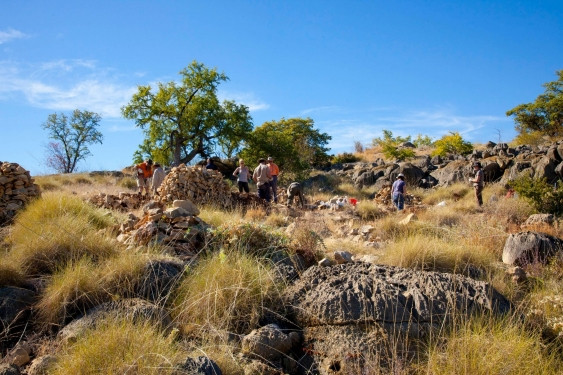Fossil of mysterious miniature marsupial lion discovered in Australia named after David Attenborough
The feisty little animal, weighting 600 grams, the size of a kitten, has never been identified before.

Scientists have discovered the fossil remains of a miniature marsupial lion that became extinct some 18 million years ago. The little creature had never been identified before.
The find took place in the Riversleigh World Heritage Area in north-western Queensland, Australia.
Researchers had been studying from a limestone deposit at the so-called Neville's Garden Site, when they came across part of the skull and tooth of the small marsupial lion. According to them, the animal would not have weighted more than 600 grams.
In a study published in the journal Palaeontologia Electronica, the scientists describe the species, which they say represent a new genus never encountered before.
They have named it "Microleo attenboroughi", for its tiny size, but also to honour British broadcaster and naturalist Sir David Attenborough – a way of recognising his support for the Riversleigh World Heritage Area, which he has described as one of the four most important fossil areas in the world.
Feisty kitten
Analysing the remains, the scientific team found out that Microleo attenboroughi had an elongate, lethally sharp, knife-like premolar in front of basined molars, a feature that is common to all members of this family of marsupial carnivores, known as "Thylacoleonidae". As a marsupial it could have moved from trees to trees.

While Microleo attenboroughi's size meant that it was comparable to a very small kitten, the last surviving marsupial lion from the same family – that went extinct about 100,000 years ago – weighed more than 100 kilograms.
"Microleo attenboroughi would have been more like the cute but still feisty kitten of the family," says lead author Anna Gillespie of the University of New South Wales (UNSW). "It's likely that it scampered amongst the tree-tops, gobbling insects as well as small vertebrates such as lizards and birds while simultaneously trying to avoid becoming a prey item for its larger relatives."
The scientists say the species was definitely carnivorous, despite its small size.
"The new species was one of the larger flesh-eaters existing in its ancient community of rainforest creatures at Riversleigh," says one of the researchers on the team, UNSW Professor Mike Archer.
Three marsupial lion species
The limestone deposit in which the fossil was discovered dates back from the Miocene, and is suspected to have formed some 19 million years ago. Many other fossils were found there including that of possums and kangaroos, toothed platypuses, koalas, bats, pythons, birds and many more.
There have also been evidence of two other marsupial lions species living at the same time and in the same area as Microleo attenboroughi. This prompts scientists to say that the diversity of marsupial lions alive at this time at Riversleigh is unmatched in the fossil record from anywhere else on the continent.

The team now hopes to discover more parts of the animal's skeleton to better understand it and its place in the Thylacoleonidae family. "Tantalising questions about the rest of its skull and skeleton which could further clarify aspects of its lifestyle – such as whether it had an enlarged 'killing' thumb claw like its Pleistocene relative – must await discovery of more complete specimens," concludes Archer.
© Copyright IBTimes 2025. All rights reserved.





















